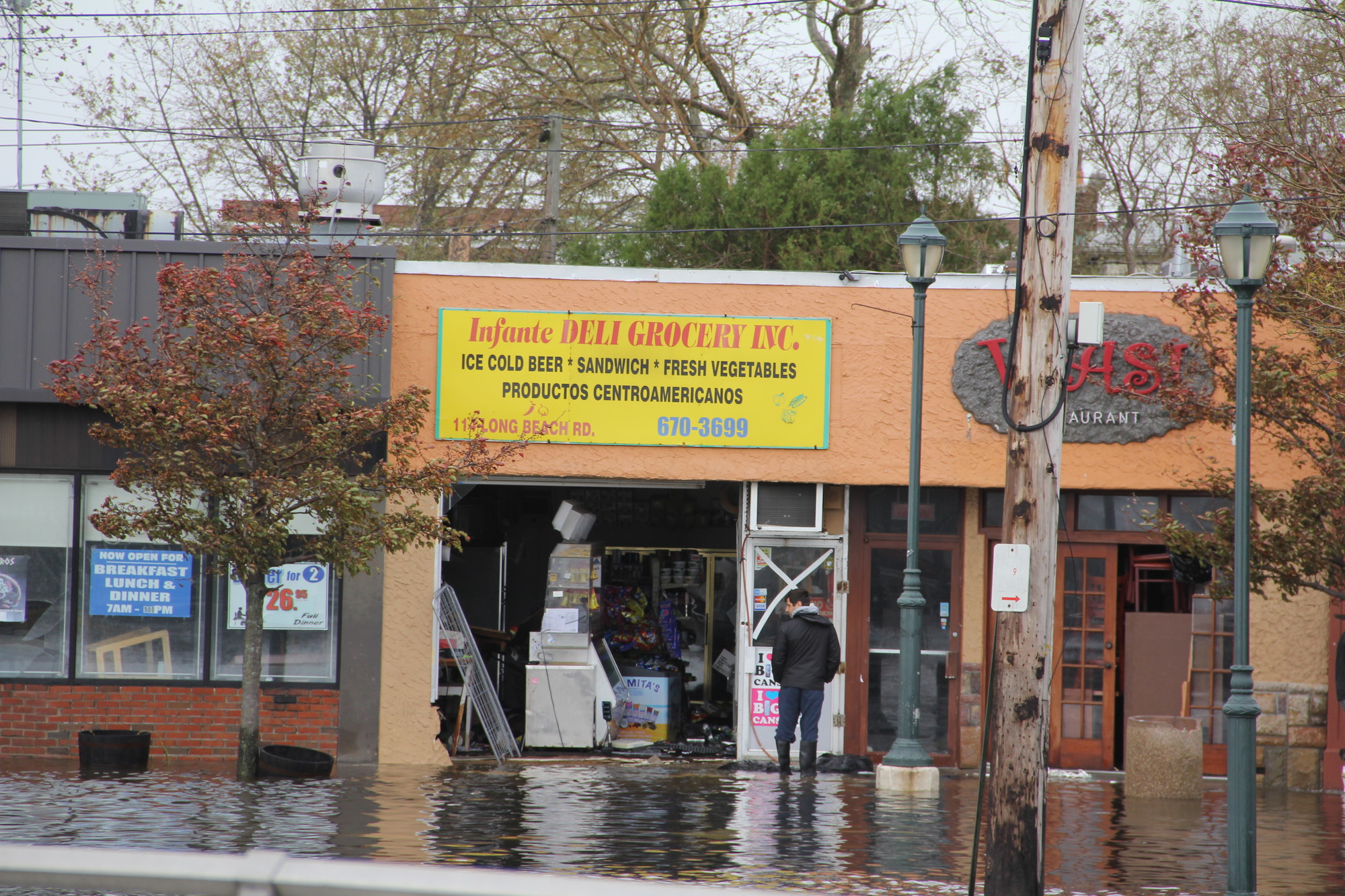I.P. mayor: Rainstorm shows our vulnerability
As a record rainfall continued through Tuesday night, and then through the next morning, one couldn’t help but think of Superstorm Sandy and the approximately $65 billion in damages it wrought.
Island Park Mayor Michael McGinty was no different. “Every event is eye-opening,” he said. “We know the implications of a major storm.”
Island Park, one of the municipalities hit hardest by Sandy two years ago, escaped any major damage this time. Though the village did experience some flooding, Island Park reported no road closures and no interruption of bus and train services. No businesses were closed as a result of the storm. The Island Park Library, which was shut down for a full year after sustaining damage during Sandy, had a small leak on the second floor.
“It was not as bad as it could have been,” McGinty said. “Our hearts go out to others who weren’t as lucky.”
As many as thirteen inches of rain fell on parts of Long Island between midnight and 10:30 a.m., turning major roads into rivers during the morning rush hour. The previous high rainfall for the state was the 11.6 inches that fell during tropical storm Irene on August 27 and 28, 2011. By comparison, approximately three inches of rain fell on New York during Superstorm Sandy.
But it was Sandy that most Long Islanders were thinking about as flash flooding closed eleven major highways and cars were stranded along the Southern State Parkway.
McGinty said that the day was a stark reminder that Long Island is little more prepared for a major storm than it was in October 2012, when Sandy struck. In fact, McGinty was meeting with representatives from the New York Rising Community Reconstruction Program on the morning of the storm, planning ways to make Island Park more resilient. “This points to the need to protect the village,” he said. “We understand the immediate need to design and build a better drainage system, including recharged basins underground.”
Recharged basins, also called infiltration basins, are used to manage storm water runoff and prevent flooding.
In April, Governor Andrew Cuomo recommended a $40 million grant from the Federal Emergency Management Agency (FEMA) through that agency’s Hazard Mitigation Grant Program. The grant is intended to help the village rebuild its infrastructure, mitigate the risks of loss and damage associated with future disasters and reduce hardship.
In June, Senator Chuck Schumer called on FEMA to expedite the grant.
“I am urging FEMA today to make Island Park’s $40 million protection and recovery project the highest priority and to provide funds for this project and make it a reality,” Schumer said in June.
The first phase of the project focuses on a comprehensive engineering study to examine defects in existing roads, pipes, bulkheads and seawalls to form an effective storm protection strategy, thus McGinty’s meeting with the CRP representatives on the day of Long Island’s record rainfall.
“It was the luck of the draw that they were here,” McGinty said.

 45.0°,
Fair
45.0°,
Fair 




